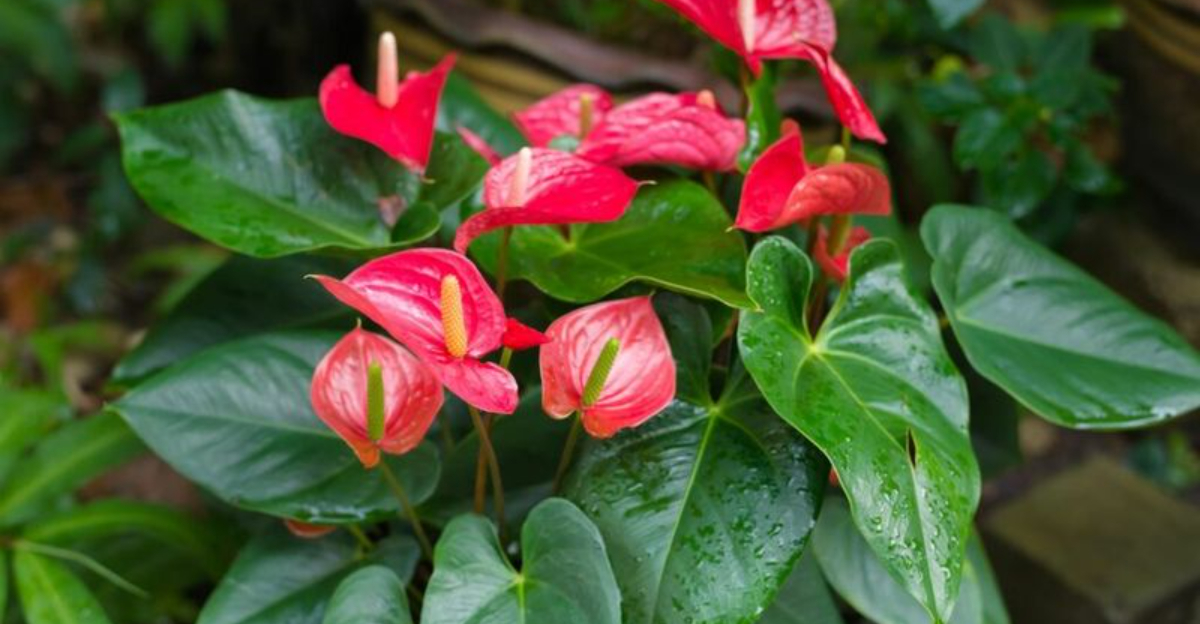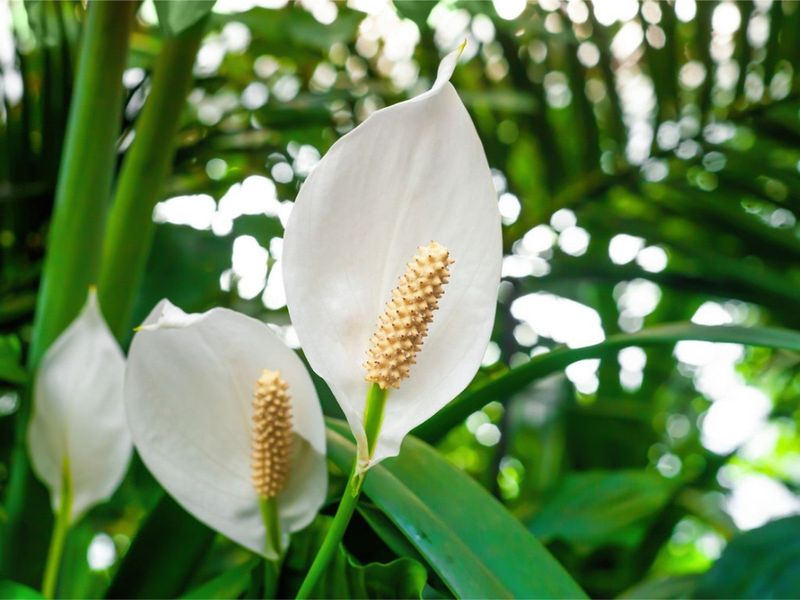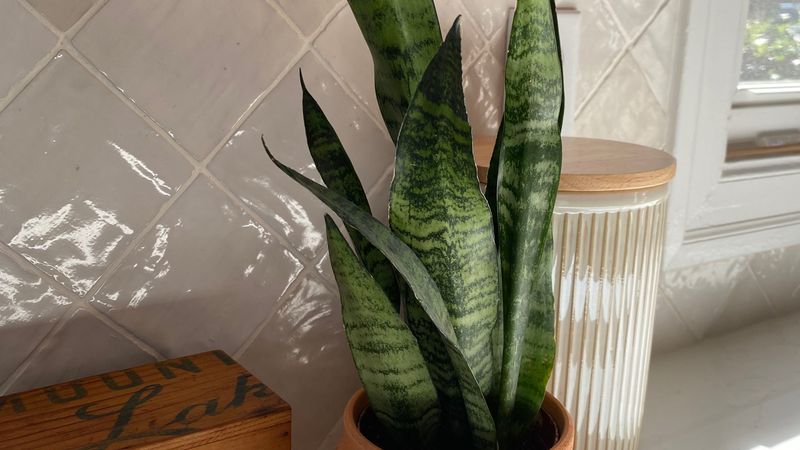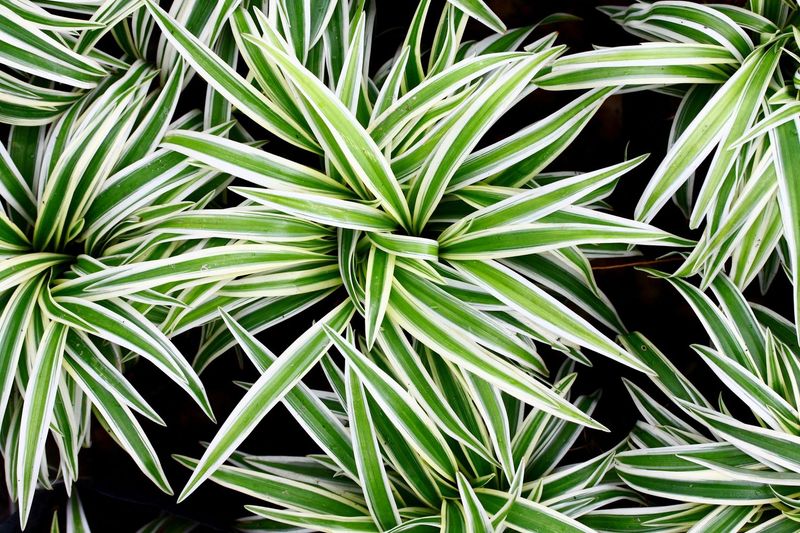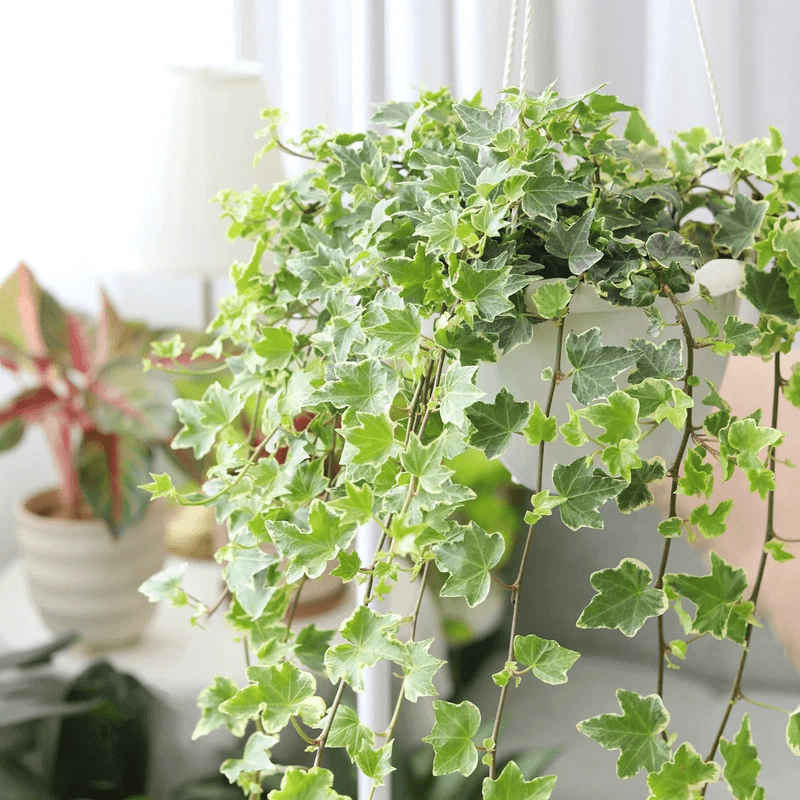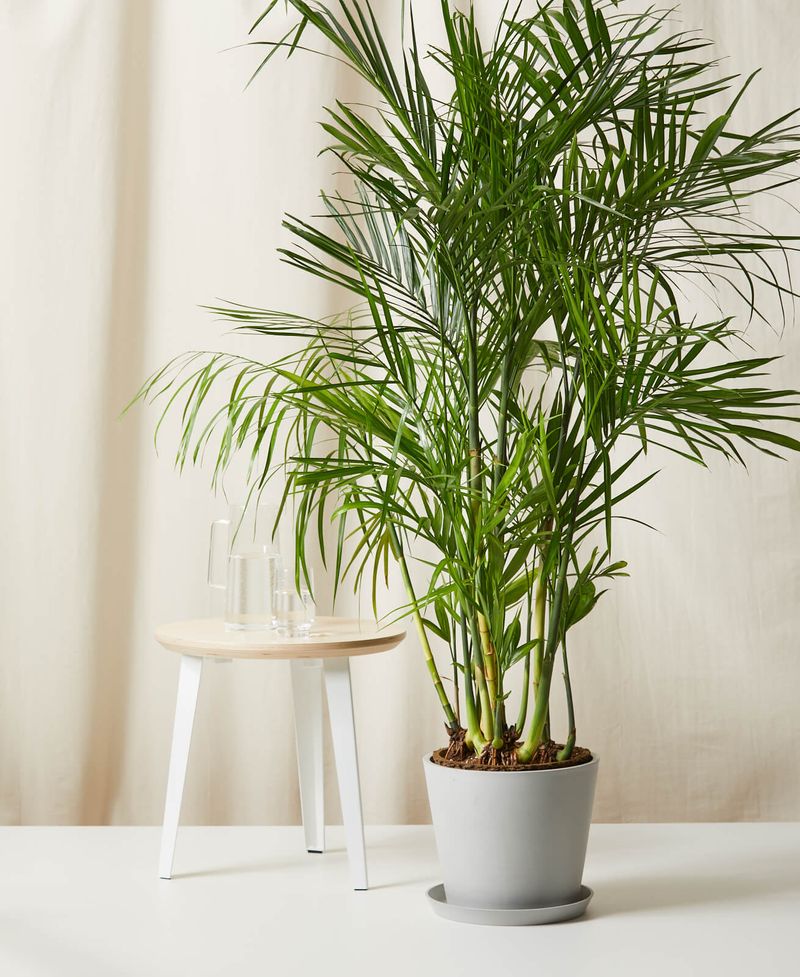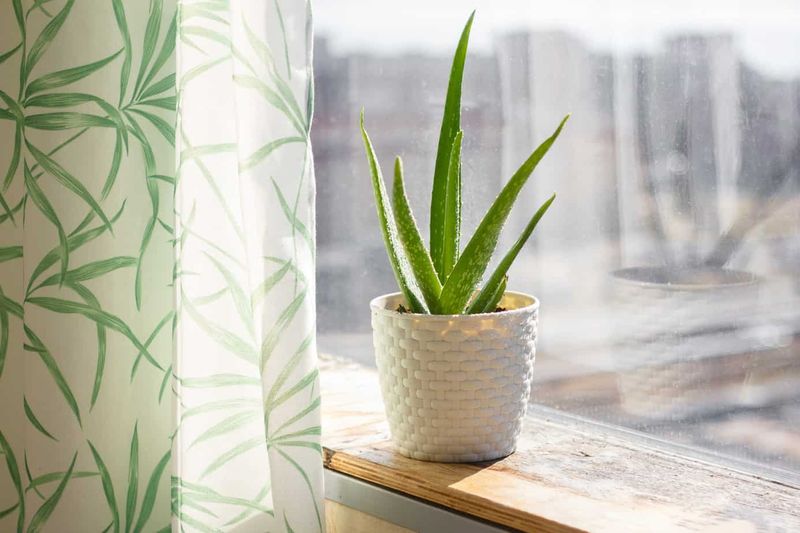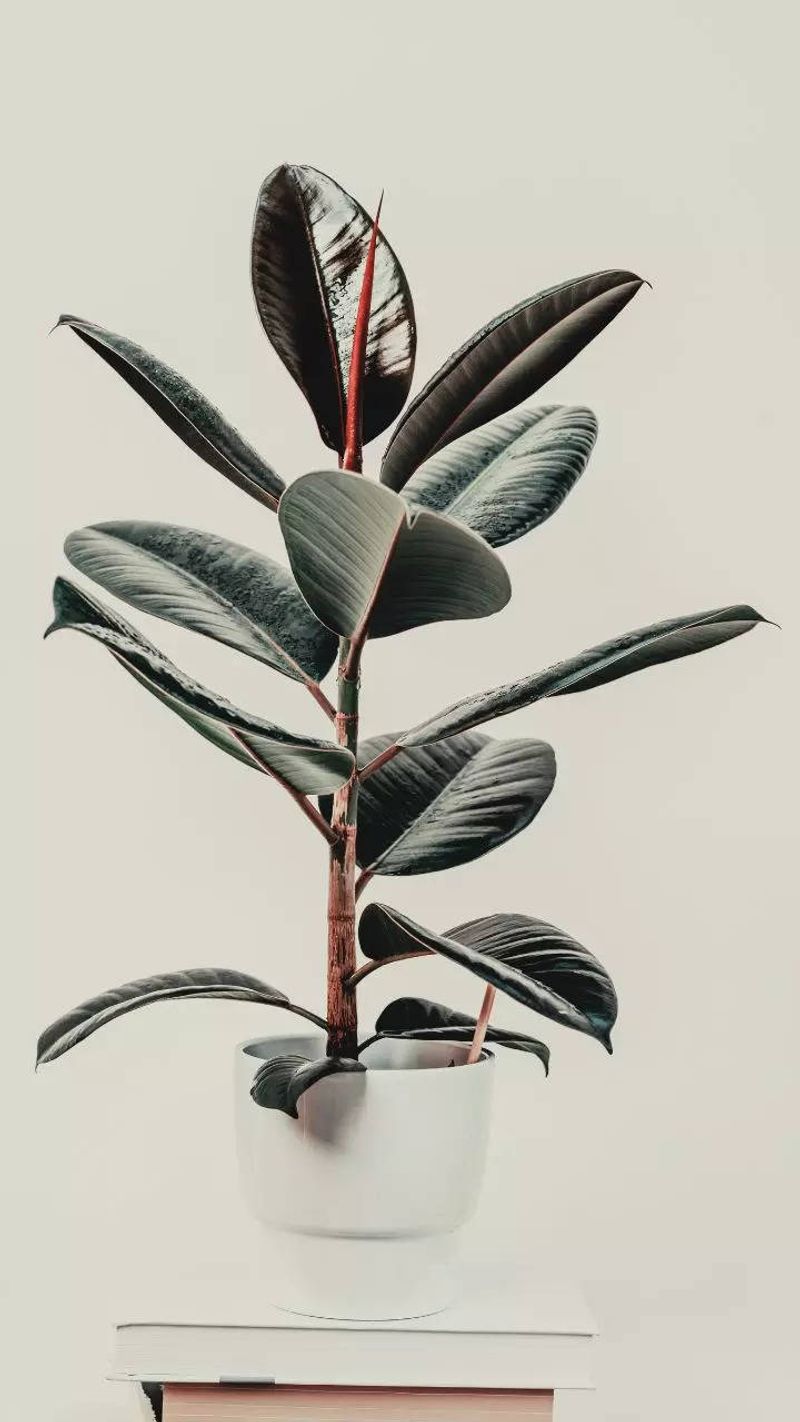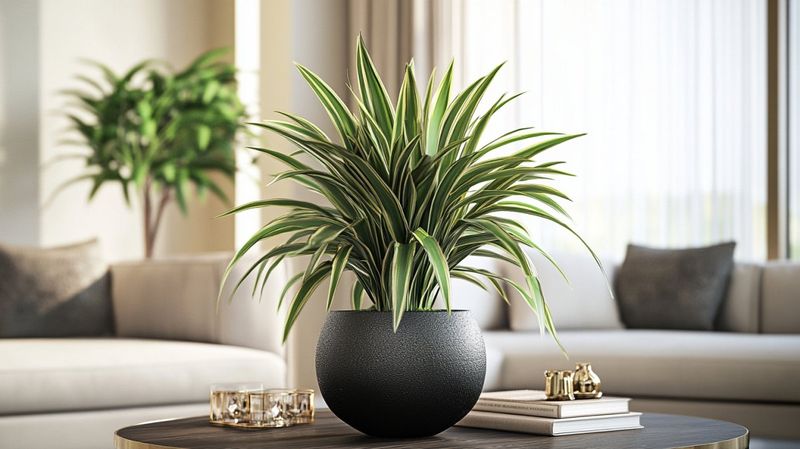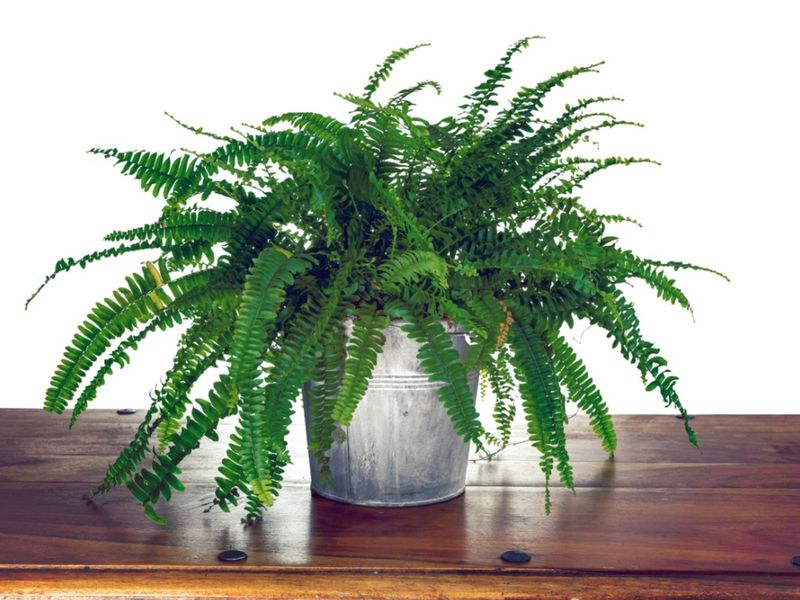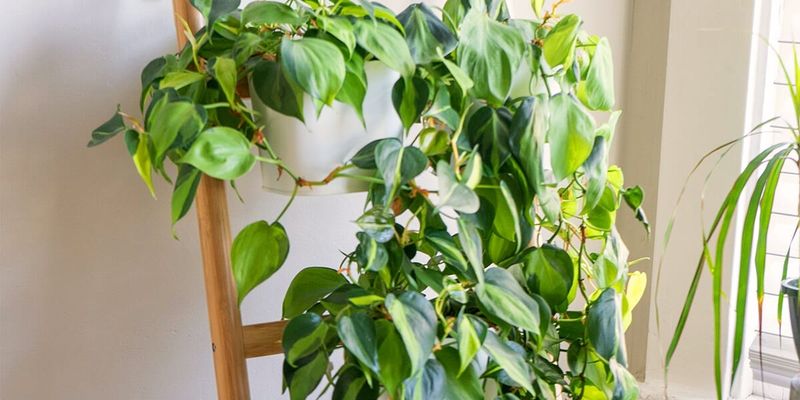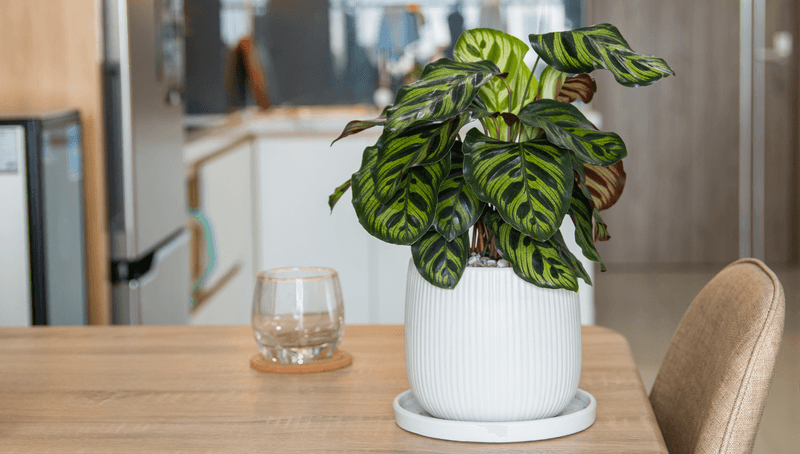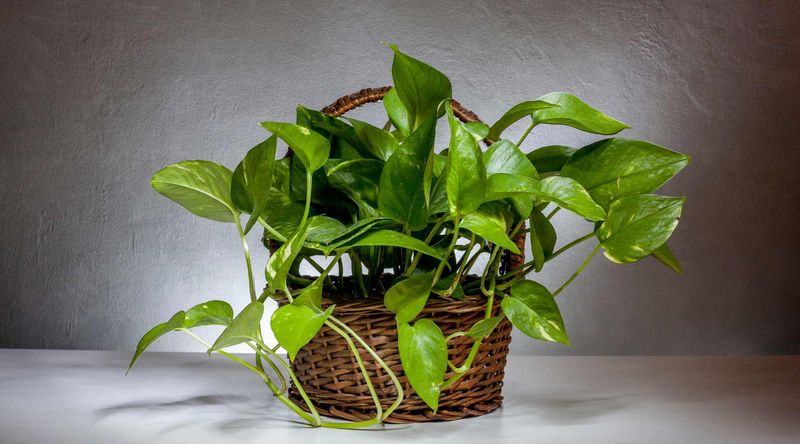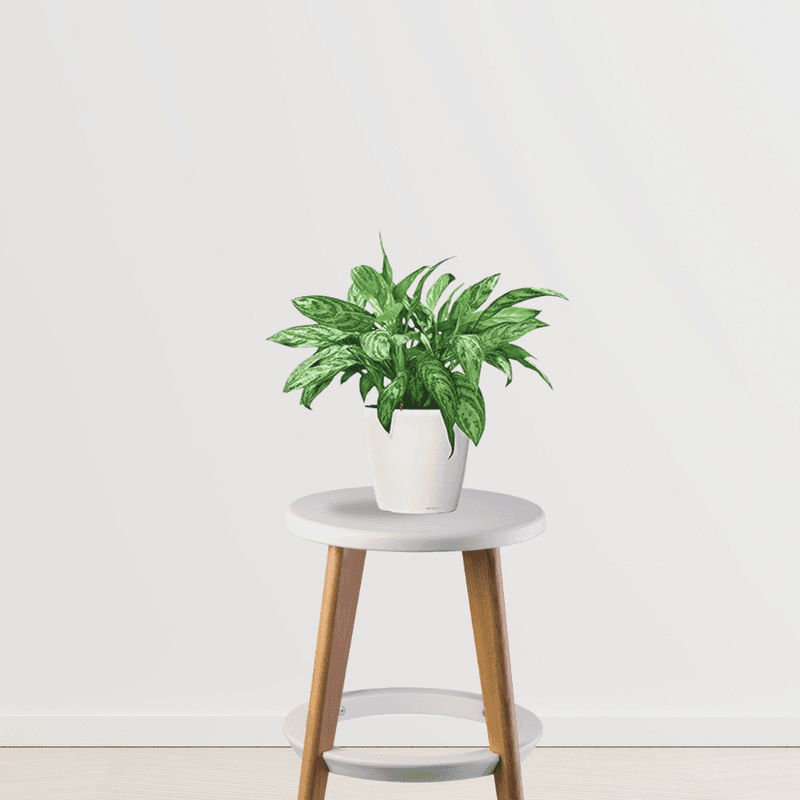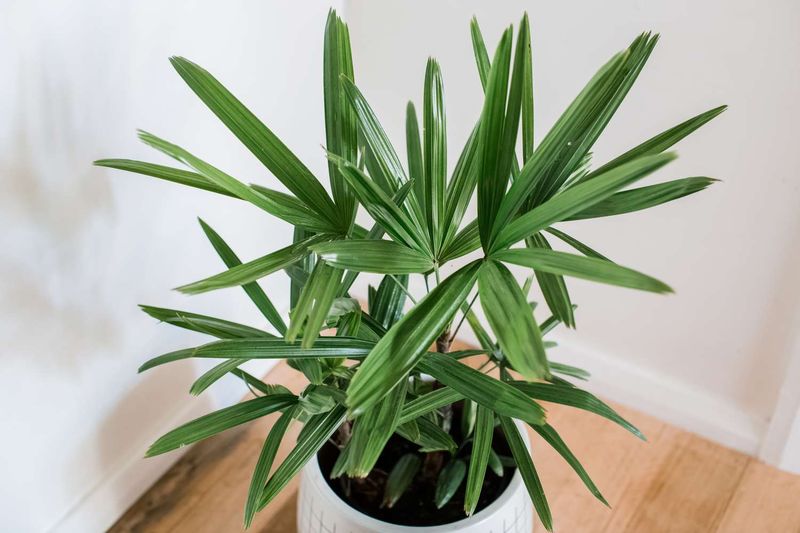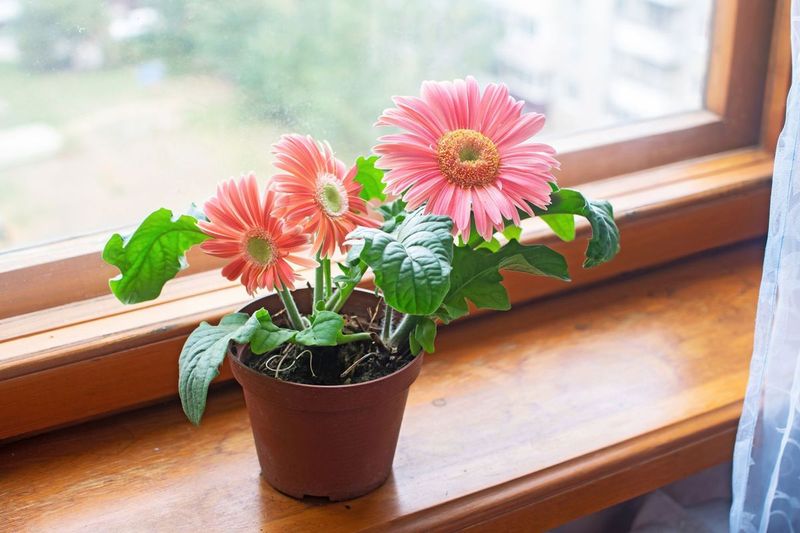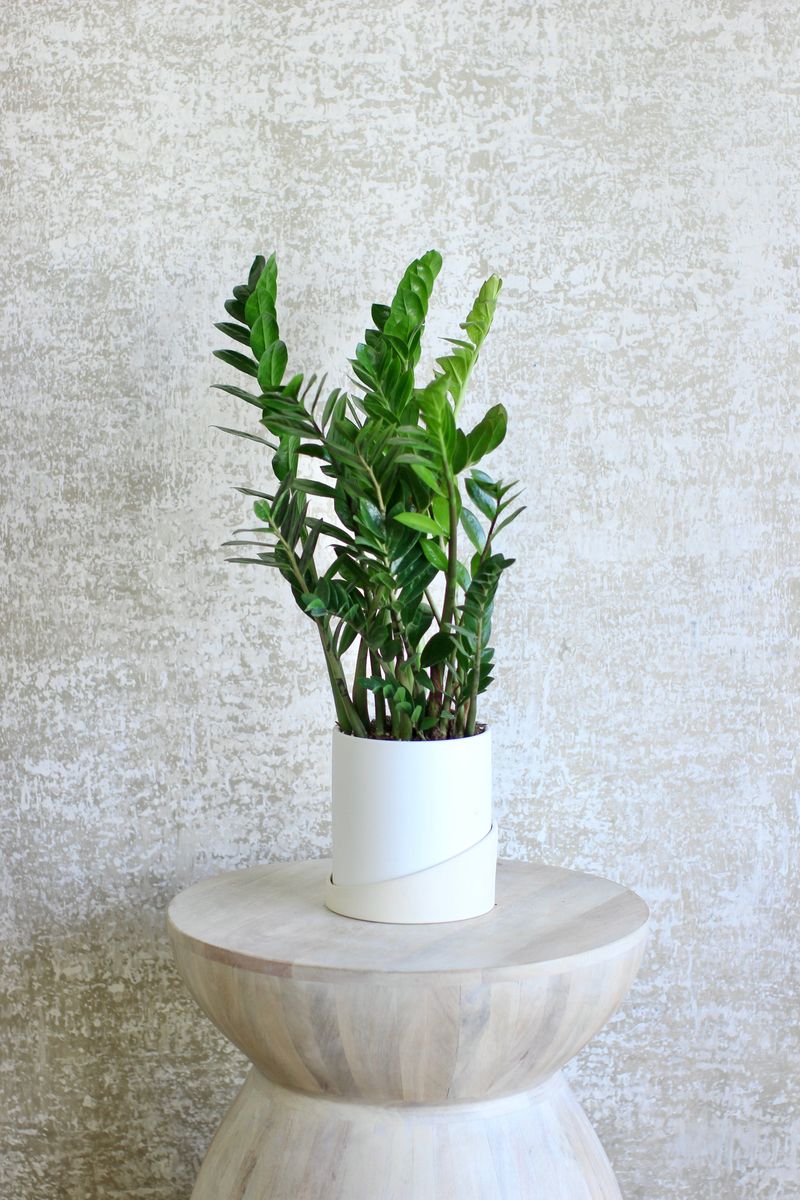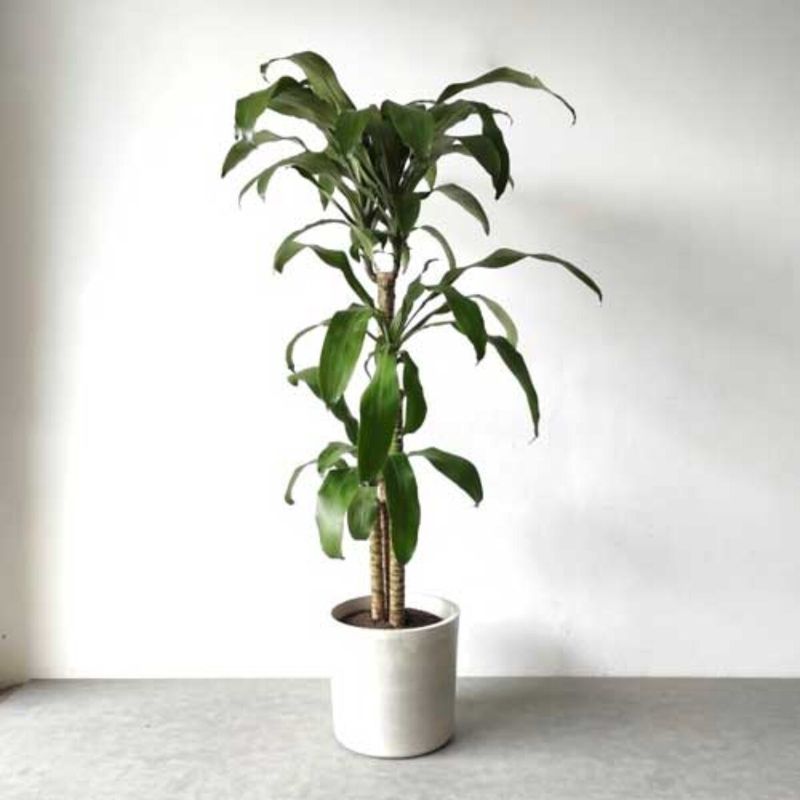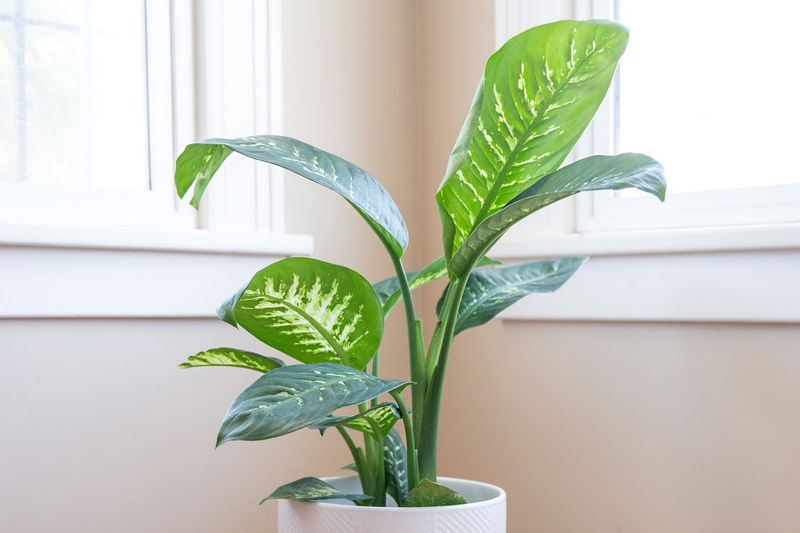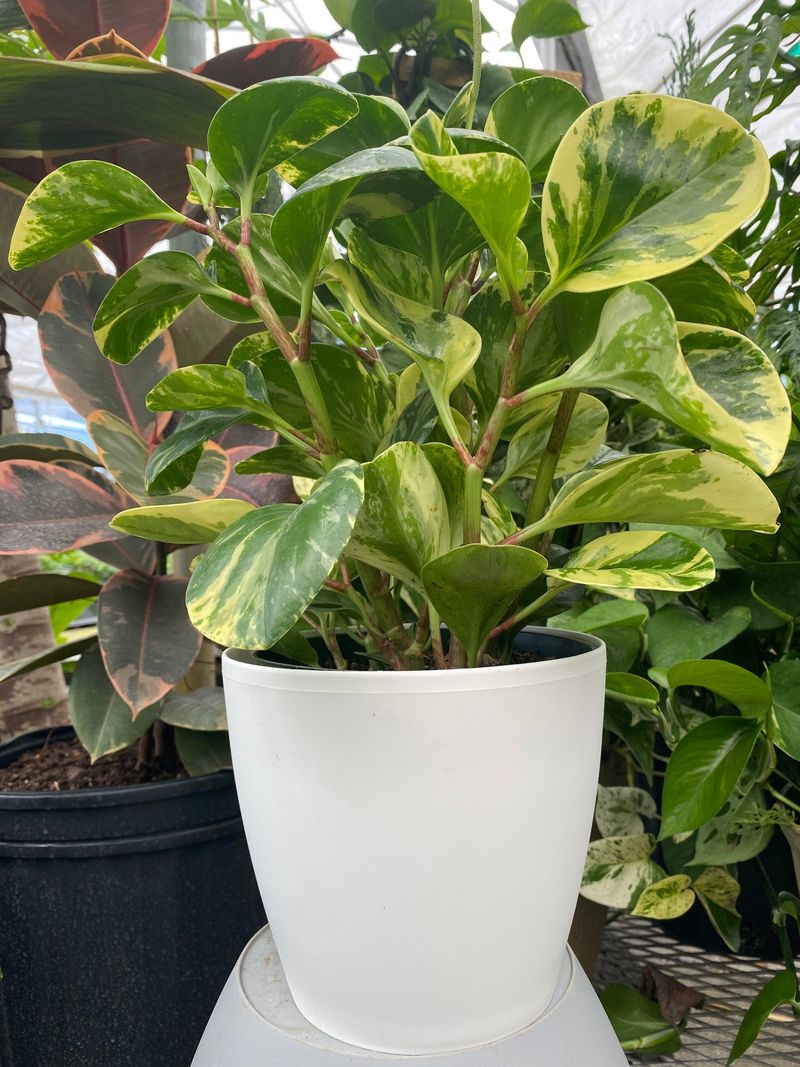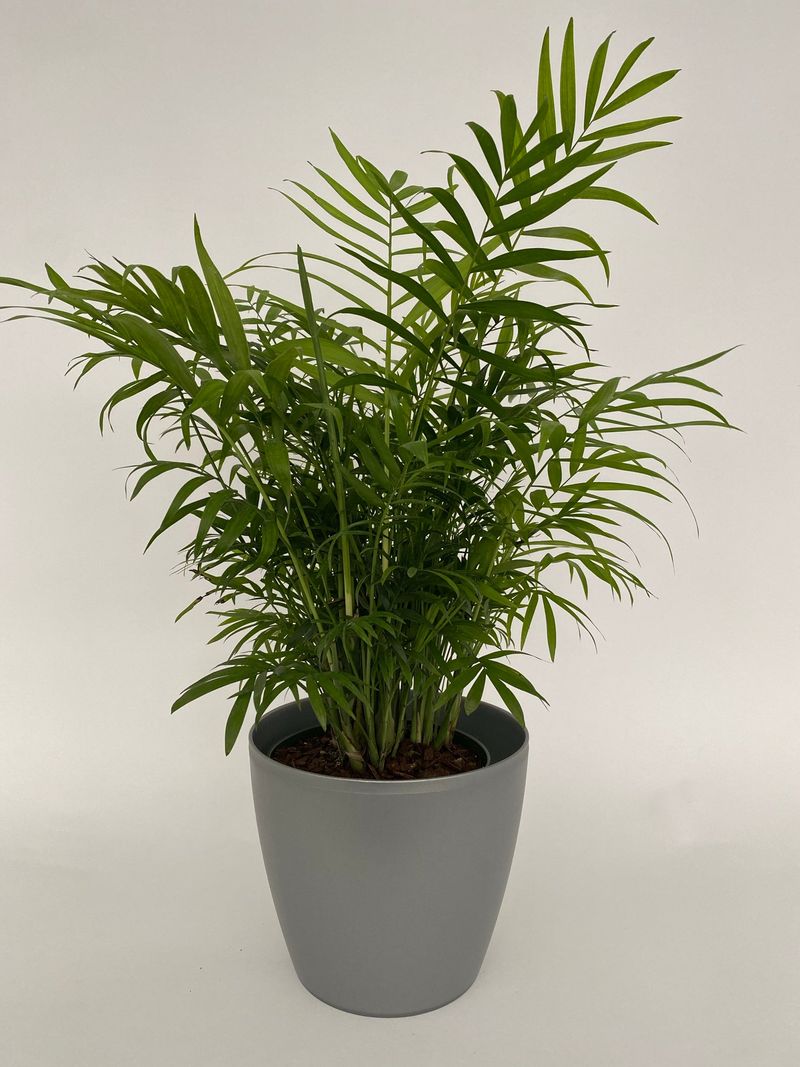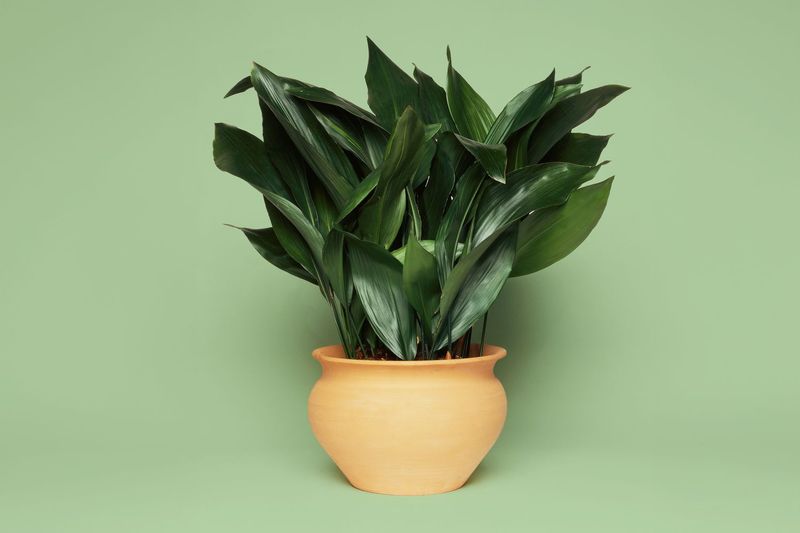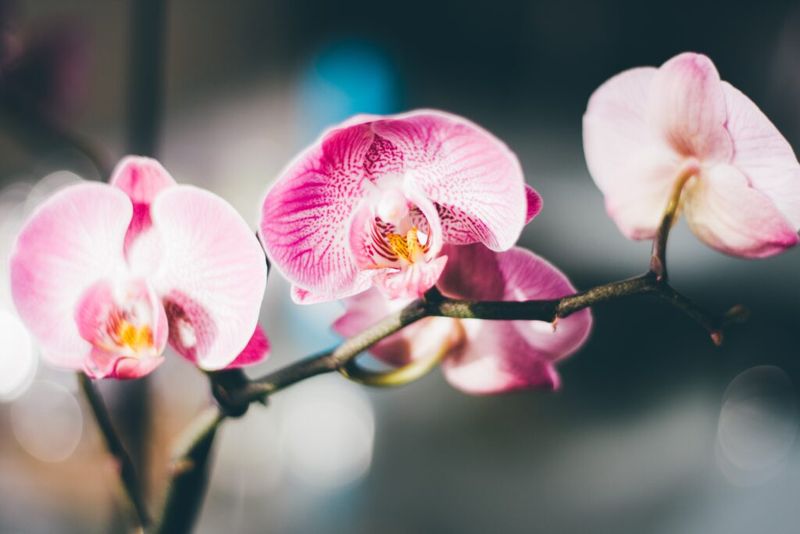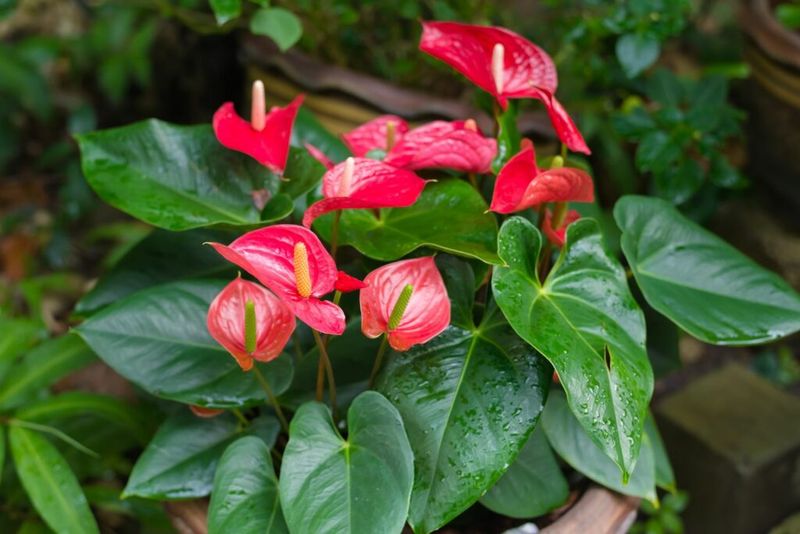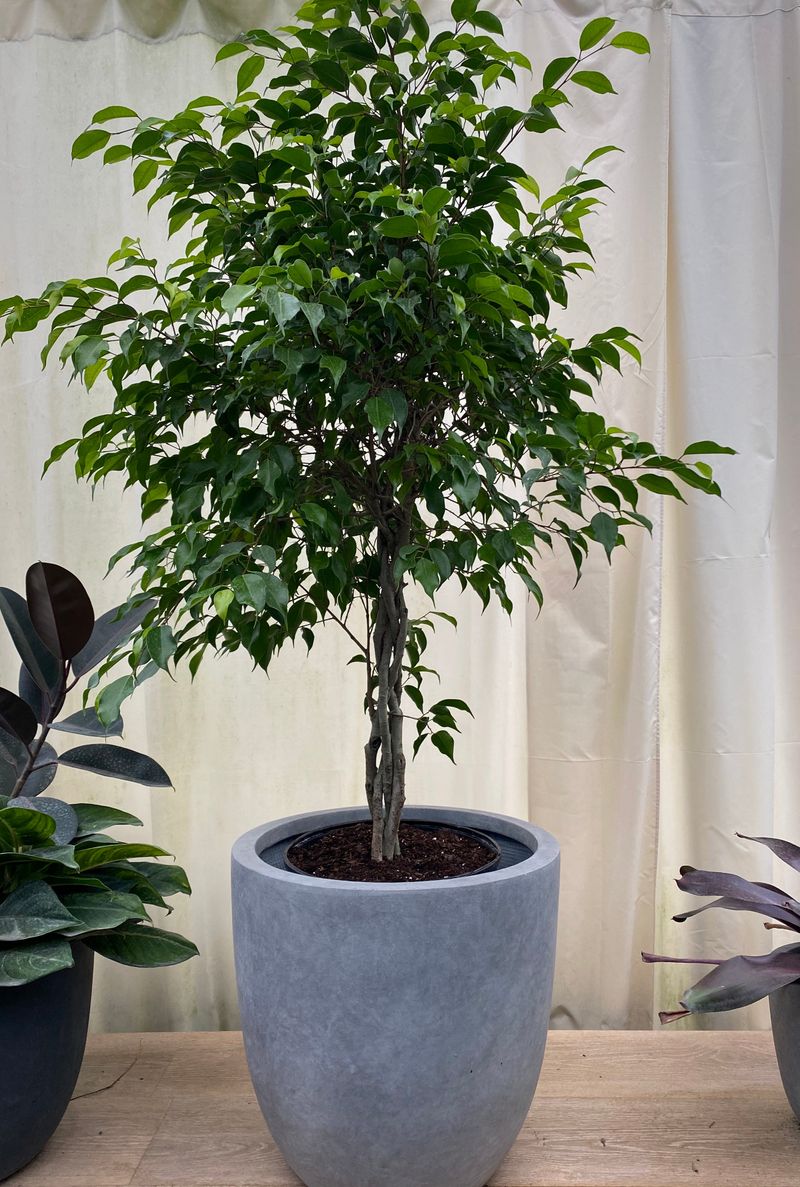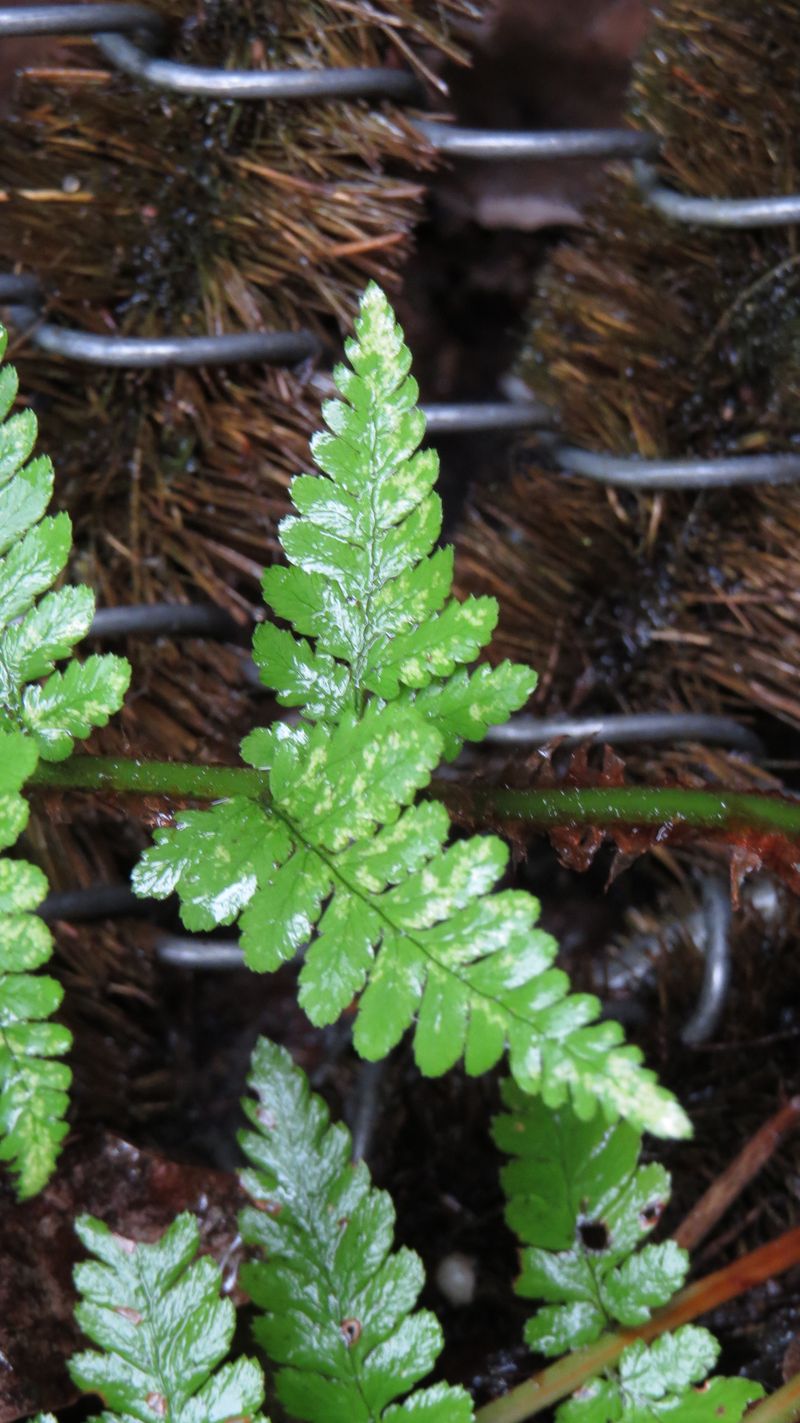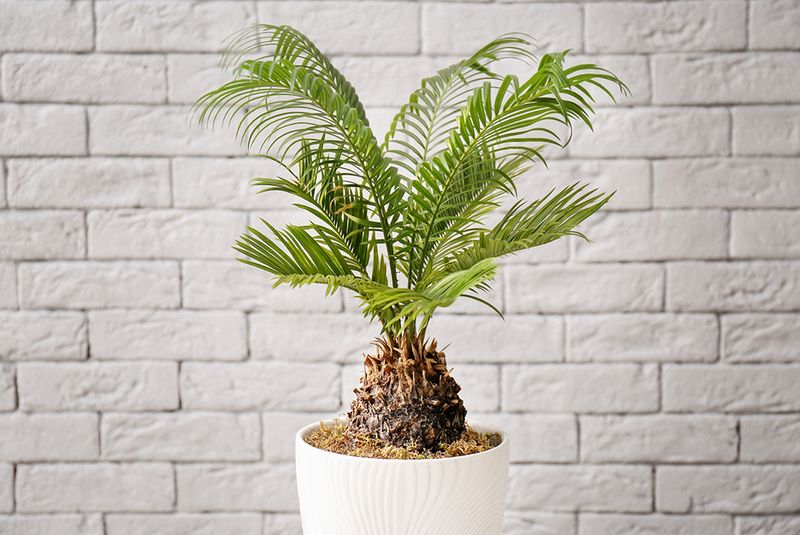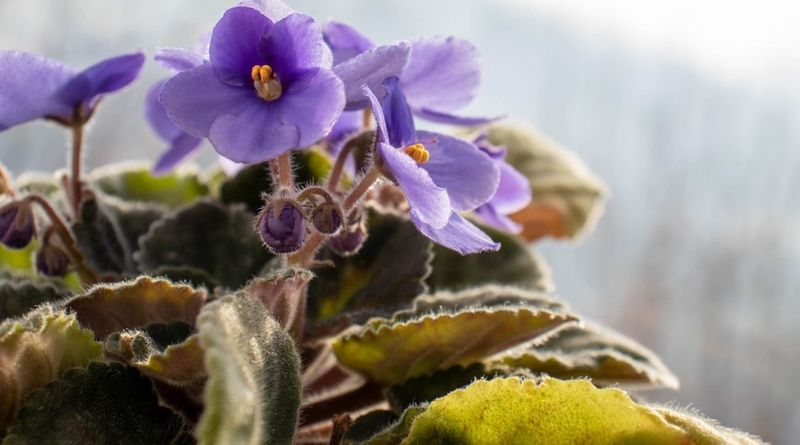Explore houseplants that purify the air and help reduce allergens, making your home a healthier place to breathe.
From moisture-adding Areca Palms to the toxin-trapping Rubber Plant, these green companions can transform your living space into an allergy-friendly haven.
However, not all plants are beneficial; some may worsen your symptoms. Let’s dive into the 25 best plants to improve your indoor air quality and 5 that you might want to avoid.
1. Areca Palm
The Areca Palm is not just a pretty face; this lush beauty adds moisture to dry air, making it a dream for dry sinuses. Its fronds sway gracefully in the breeze, whispering soft reassurances of cleaner air. Known to filter common toxins, it’s ideal for those seeking a breath of fresh air indoors.
Be it your office or home, the Areca Palm stands tall as a natural humidifier. Its vibrant green leaves and easygoing nature add a touch of tropical warmth to any space. Truly, a plant that cares for its surroundings.
2. Peace Lily
With its elegant white blooms, the Peace Lily is more than an eye-catcher; it’s a silent warrior against mold spores. This plant thrives in humid environments like bathrooms and kitchens, removing impurities from the air.
Its graceful petals and lush leaves create a serene atmosphere, perfect for unwinding. Despite its beauty, it requires minimal care, flourishing even in low light. The Peace Lily’s ability to purify air makes it an ally in maintaining a healthy home environment.
Perfect for those looking to add a touch of elegance and cleanliness to their spaces.
3. Snake Plant (Sansevieria)
Resilient and striking, the Snake Plant stands as a sentinel in the world of air-purifying plants. Known for its unique ability to produce oxygen at night, it’s an ideal companion for bedrooms. Its sharp, architectural leaves make a bold statement, while its low-maintenance nature suits even the busiest lifestyles.
The Snake Plant thrives on neglect, requiring little water and rewarding you with cleaner, fresher air. A symbol of strength and endurance, it’s a must-have for anyone seeking simplicity and functionality in their living space.
4. Spider Plant
The Spider Plant, with its cascading foliage, is a vibrant addition to any home. Known for its ability to absorb allergens like mold and formaldehyde, it’s a boon for allergy sufferers. This pet-friendly plant thrives in various conditions, displaying resilience and adaptability.
Its playful green and white-striped leaves bring a touch of freshness, while its capability to purify air ensures a healthier indoor environment. Easy to care for, the Spider Plant is perfect for novice gardeners and seasoned plant lovers alike. A delightful blend of beauty and utility.
5. English Ivy
With its classic charm, English Ivy climbs its way into the hearts of homeowners. This versatile plant excels at fighting airborne mold and fecal particles, making it suitable for high-traffic areas. Its trailing vines and rich green leaves create a lush, sophisticated backdrop in any room.
Despite its delicate appearance, English Ivy is a robust purifier, requiring minimal maintenance. Perfect for adding a touch of nature to urban living spaces, it’s a timeless choice for those seeking both aesthetics and air quality improvement.
6. Bamboo Palm
The Bamboo Palm stands as a tranquil oasis in any environment. Not only does it add a touch of the tropics to your home, but it also acts as a natural humidifier. Known for filtering benzene and formaldehyde, it’s a favorite among urban dwellers.
Its slender, elegant fronds dance gracefully in the sunlight, imbuing a space with calm and serenity. Low-maintenance yet highly effective, the Bamboo Palm is perfect for those looking to enhance both style and air quality. A harmonious blend of beauty and function.
7. Aloe Vera
Aloe Vera is a multitasker in the realm of household plants. Not only does it purify the air, but it also provides soothing gel for skin irritations. Its thick, fleshy leaves store water, making it drought-resistant and easy to care for.
Perfect for sunny windowsills or kitchen countertops, Aloe Vera stands as a symbol of resilience and practicality. Its ability to remove toxins from the air while providing a natural remedy for burns and cuts makes it a valuable addition to any home. A plant that truly gives back.
8. Rubber Plant
The Rubber Plant is a powerhouse when it comes to removing toxins from the air. With its thick, glossy leaves, it not only adds a touch of elegance to your decor but also traps dust effectively. Its bold, upright stance makes it a striking focal point in any room.
This plant thrives in indirect light, demanding little attention while rewarding you with improved air quality. Perfect for those who appreciate a blend of style and substance, the Rubber Plant is both a visual and environmental asset.
9. Dracaena
The Dracaena is a superstar in the world of indoor plants, known for filtering out chemicals from paint and cleaning supplies. Its striking, sword-like leaves come in various colors, adding a splash of vibrancy to any room. Despite its robust appearance, it requires minimal care, thriving in shaded areas.
Perfect for offices or living rooms, the Dracaena helps create a cleaner, fresher environment. Its ability to adapt to different lighting conditions makes it a versatile choice for plant enthusiasts. A true guardian of indoor air quality.
10. Boston Fern
The Boston Fern is a natural air humidifier and mold fighter, thriving in shaded, moist environments. Its soft, feathery fronds bring a touch of the outdoors inside, creating a tranquil atmosphere. Known for its ability to remove toxins from the air, it’s a favorite among those seeking a healthier living space.
Despite its delicate appearance, the Boston Fern is robust, requiring regular misting to maintain its lushness. Perfect for bathrooms or shaded garden rooms, this plant adds a touch of greenery wherever it resides.
11. Philodendron
The Philodendron is a hardy plant, celebrated for its efficiency at air purification. Its heart-shaped leaves and sprawling vines make it a charming addition to any interior. However, pet owners beware, as it’s not safe for curious pets.
Thriving in low light, this plant is perfect for filling awkward corners or adding depth to a room. Its low-maintenance nature ensures it remains a favorite among busy homeowners.
The Philodendron’s blend of beauty and practicality makes it a staple in many households, enhancing both decor and air quality.
12. Calathea
A true gem in the plant world, Calathea is known for its humidity-boosting properties and stunning foliage. Its leaves, adorned with intricate patterns, move throughout the day, a phenomenon known as nyctinasty. Non-toxic to pets, this plant is a rare combination of beauty and safety.
It thrives in indirect light and requires regular watering, making it a commitment for plant enthusiasts. Perfect for creating a lush, tropical vibe, the Calathea is both a visual delight and a practical choice for those looking to enhance indoor air quality.
13. Pothos (Devil’s Ivy)
The Pothos, also known as Devil’s Ivy, is a champion of air purification. Its trailing vines and heart-shaped leaves make it an attractive and versatile addition to any space. Ideal for low-light areas, this plant thrives where others might struggle.
Known for its ability to filter toxins, Pothos is a favorite among those looking to improve their indoor environment. Easy to propagate and care for, it’s perfect for both beginners and seasoned gardeners. A plant that combines beauty with practicality effortlessly.
14. Chinese Evergreen
The Chinese Evergreen is celebrated for its stunning foliage and excellent air cleaning abilities. With its variegated leaves and ability to thrive in low light, it’s a versatile choice for any interior. Known for its resilience, it requires minimal care, making it a favorite among busy individuals.
This plant not only enhances the aesthetic of a room but also contributes to healthier air quality. Perfect for offices or living rooms, the Chinese Evergreen is a beautiful and functional choice for plant enthusiasts.
15. Lady Palm
The Lady Palm stands as a testament to elegance and functionality. Its fan-shaped leaves and low-maintenance nature make it a popular choice for indoor environments. Known for its ability to filter indoor pollutants, it’s a reliable ally in maintaining air quality.
This plant thrives in indirect light, adding a touch of sophistication to any room. Perfect for those seeking a blend of style and practicality, the Lady Palm is a versatile choice that complements both modern and traditional decor.
16. Gerbera Daisy
The Gerbera Daisy is a rare gem among flowering plants, known for producing oxygen at night. Its vibrant blooms add a pop of color to any space, lifting spirits and brightening rooms.
Despite its delicate appearance, this plant is robust, thriving in sunlight. Ideal for bedrooms or living areas, the Gerbera Daisy not only enhances decor but also contributes to a healthier indoor environment. A true blend of beauty and function, it’s perfect for those seeking a touch of nature’s elegance indoors.
17. ZZ Plant
The ZZ Plant is a testament to resilience and elegance in the world of indoor plants. Surviving in nearly any condition, it’s perfect for those with a busy lifestyle. Its glossy, dark green leaves add a touch of sophistication to any decor.
Known for its air-purifying abilities, the ZZ Plant is a reliable partner in maintaining a healthy indoor environment. Ideal for offices or homes, it requires minimal care, making it a favorite among plant enthusiasts. A symbol of durability and beauty, the ZZ Plant is a must-have.
18. Corn Plant (Dracaena fragrans)
The Corn Plant is an attractive addition to any home, known for removing smoke and chemical odors. Its tall, graceful leaves create a striking silhouette, adding height and interest to a room. Despite its elegance, it requires minimal care, thriving in indirect light.
Perfect for living rooms or hallways, the Corn Plant is a functional choice for those looking to improve indoor air quality. Its ability to blend seamlessly with various decor styles makes it a versatile and valuable plant.
19. Dumb Cane (Dieffenbachia)
The Dumb Cane is a striking plant, known for its ability to reduce airborne pollutants. With its broad, variegated leaves, it adds a touch of tropical flair to any space. However, caution is advised as it’s not safe for pets and small children.
Thriving in indirect light, it’s perfect for creating a lush, green corner in your home. Despite its beauty, the Dumb Cane requires careful handling, making it a choice for those who appreciate both aesthetics and responsibility in their indoor gardens.
20. Fiddle Leaf Fig
The Fiddle Leaf Fig is a favorite among interior designers, known for its large, glossy leaves that trap dust effectively. A statement piece in any room, it enhances decor while contributing to cleaner air.
Despite its popularity, it requires specific care, preferring bright, indirect light and consistent watering. Ideal for modern spaces, the Fiddle Leaf Fig stands as a symbol of elegance and functionality. For those willing to invest in its care, it’s a rewarding addition to any plant collection.
21. Peperomia
Peperomia is a delightful plant, celebrated for not producing pollen and its ability to tolerate low humidity. Its waxy, vibrant leaves bring a touch of nature to any indoor space. Perfect for kitchens or home offices, its compact size makes it an ideal choice for small areas.
Despite its delicate appearance, Peperomia is robust and requires minimal care. A plant that combines beauty with practicality, it’s perfect for those seeking a low-maintenance companion in their home or workspace.
22. Parlor Palm
The Parlor Palm is a classic choice for indoor greenery, known for its air-purifying qualities. Its delicate fronds create a lush, tropical vibe in shaded corners, making it a versatile choice for various interiors. Thriving in low light, it’s perfect for areas with limited natural light.
Despite its delicate appearance, this plant is surprisingly resilient, requiring minimal care. An elegant addition to any home, the Parlor Palm is both a decorative and functional choice for plant enthusiasts.
23. Cast Iron Plant
The Cast Iron Plant stands as a symbol of resilience and low-maintenance living. With its tough, dark green leaves, it adds a rugged yet elegant touch to any decor. Known for its ability to tolerate neglect, it’s perfect for those with busy lifestyles.
Thriving in low light, it’s ideal for shaded areas in homes or offices. Despite its hardy nature, the Cast Iron Plant helps maintain a healthier indoor environment, making it a practical choice for plant lovers. A testament to beauty and durability.
24. Moth Orchid (Phalaenopsis)
The Moth Orchid is a graceful addition to any interior, known for being pet-safe and pollen-free. Its stunning blooms add a touch of elegance and tranquility to bedrooms or living areas. Despite its delicate appearance, this orchid is surprisingly easy to care for, thriving in indirect light.
Perfect for those seeking a touch of sophistication, it contributes to a peaceful, allergy-friendly environment. The Moth Orchid’s beauty and practicality make it a favorite among plant enthusiasts and interior designers alike.
25. Anthurium
Anthurium is a striking plant, known for its ability to reduce mold and bacteria in the air. Its bold, red flowers bring a splash of color to any space, while its lush leaves add a tropical flair. Despite its beauty, it’s important to keep it out of reach of pets, as it can be toxic if ingested.
Perfect for kitchens or living areas, Anthurium combines aesthetics with functionality, making it a valuable addition to any home. A plant that stands out in both looks and benefits.
1. Ficus (Weeping Fig)
The Ficus, also known as the Weeping Fig, might not be the best choice for allergy sufferers. Its sap can cause airborne irritation, making it a common allergy trigger. Despite its elegant arched branches and shiny leaves, caution is advised when considering this plant for homes with sensitive individuals.
Thriving in bright, indirect light, it requires regular care and attention. For those who adore its aesthetic, it’s best placed in well-ventilated areas. The Ficus is a reminder that beauty sometimes comes with a price.
2. Male Ferns
While Male Ferns add a touch of wilderness to interiors, they produce spores that can irritate sensitive airways. Particularly in closed spaces, these spores become a concern for allergy sufferers. Despite their lush, green appearance and ability to thrive in shaded areas, they require careful consideration.
Ideal for outdoor gardens, they bring a natural vibe and are best appreciated in the open air. For those who value their beauty, maintaining distance in homes is advised. A plant that highlights the balance between nature and indoor living.
3. Yucca
Yucca is a striking desert plant, known for its sharp, architectural leaves. However, its pollen and sharp edges may not be ideal for sensitive individuals. Thriving in sunny conditions, it’s better suited for outdoor spaces or well-ventilated areas.
Despite its rugged beauty, caution is advised when incorporating Yucca into allergy-prone environments. Perfect for those seeking a touch of the desert indoors, it requires careful placement. A plant that offers both allure and a reminder of nature’s complexity.
4. Sago Palm
The Sago Palm, with its lush appearance, is not allergy-friendly at all. Known for being toxic and pollen-heavy, it’s a plant best avoided by those with sensitivities. Despite its exotic beauty and ability to thrive in bright conditions, it poses significant health risks.
Ideal for outdoor tropical gardens, it’s a plant that demands respect for its potent nature. For those willing to admire from afar, it remains a captivating sight. A reminder that not all beauty is without danger.
5. African Violet (with Mold-Prone Soil)
African Violets, with their vibrant blooms, are a popular indoor plant. However, their soil tends to stay damp, which can lead to mold growth—a problem for those with allergies. Despite their charming flowers and compact size, they require careful attention to soil moisture levels.
Ideal for bright, indirect light, they bring a splash of color to any room. For plant enthusiasts willing to manage their environment, African Violets offer both beauty and challenge. A plant that’s both alluring and demanding.
